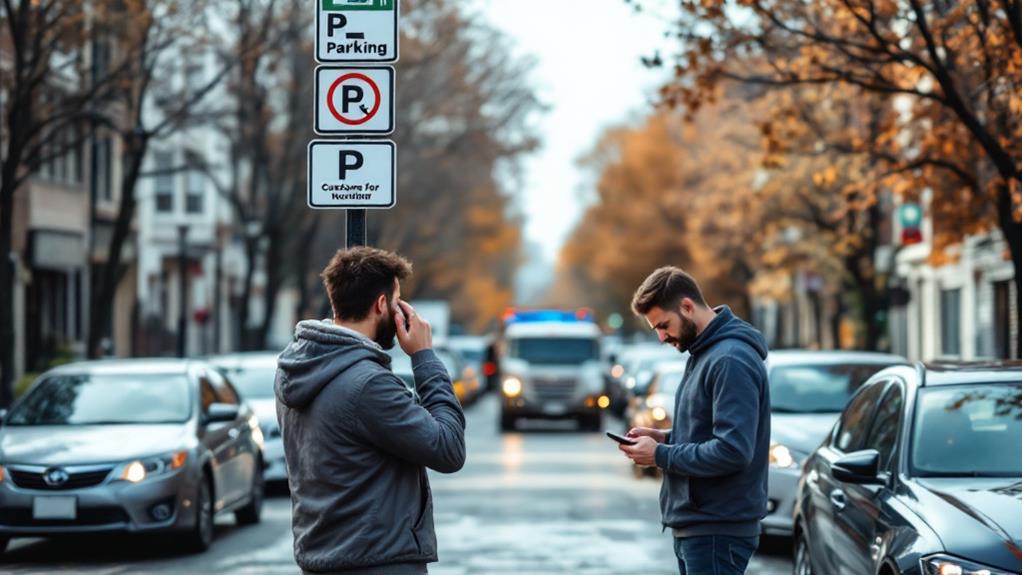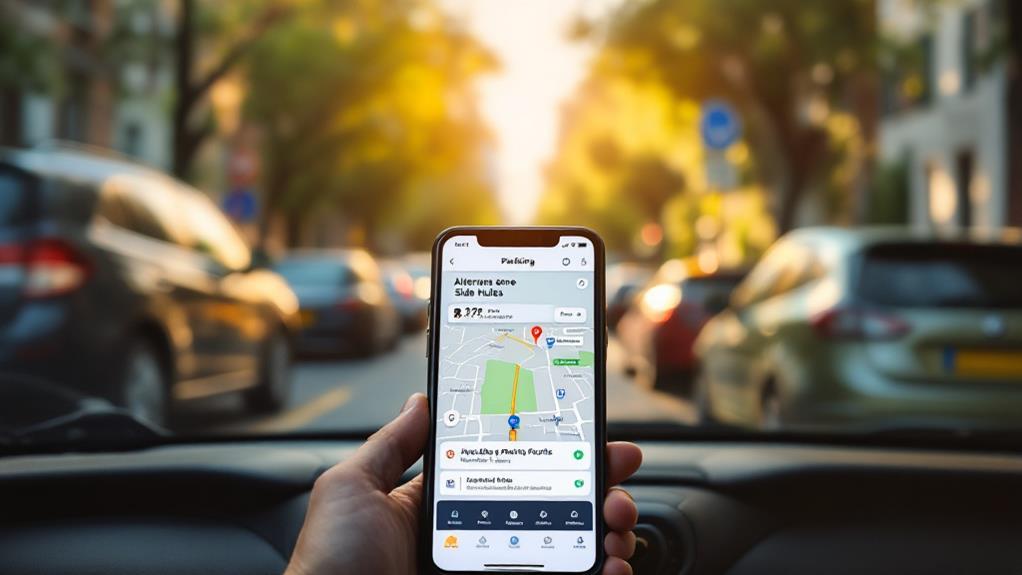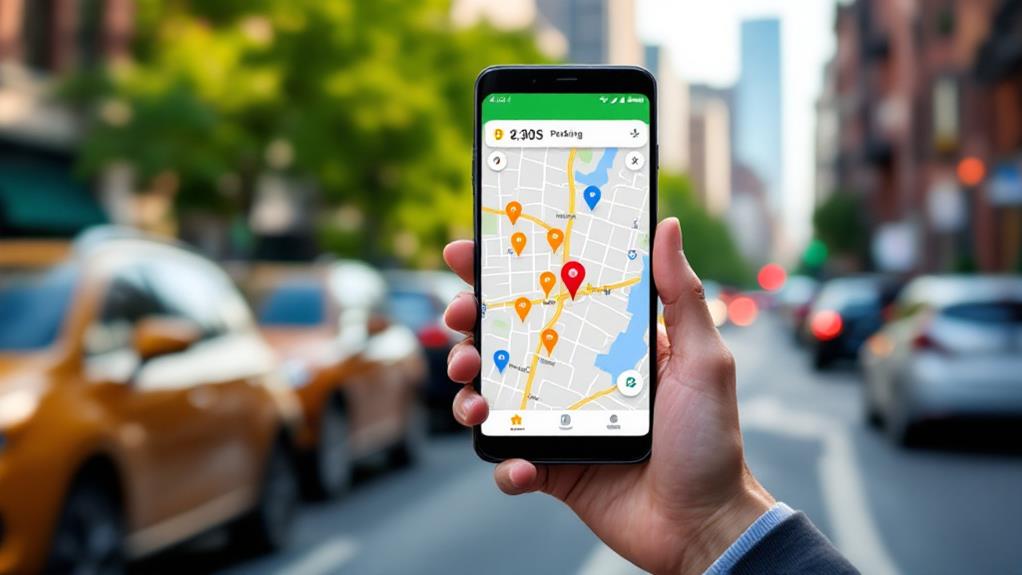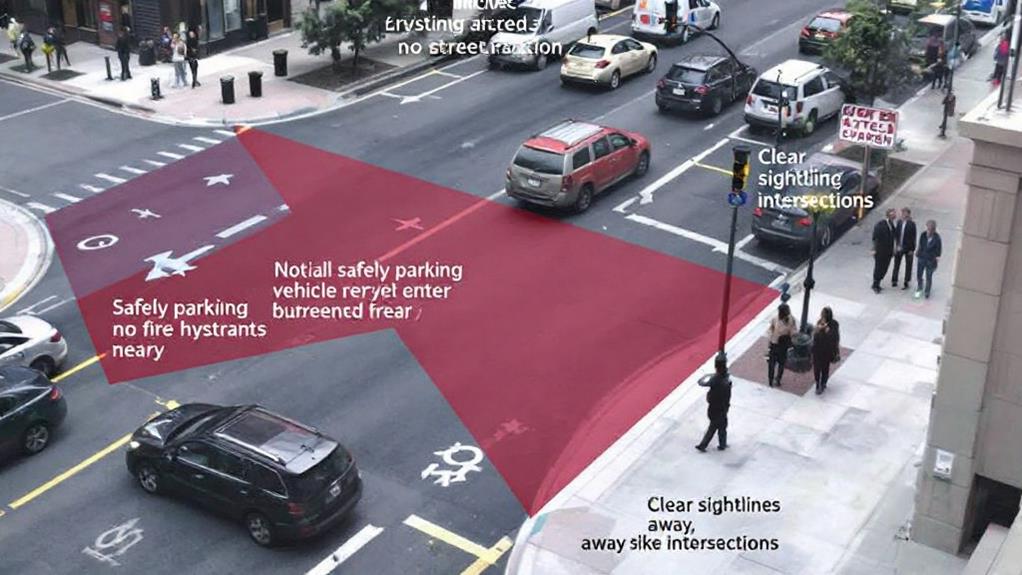How to Navigate Alternate Side Street Parking Rules

To explore alternate side street parking rules, start by researching your city's specific regulations, as they vary widely. Time your moves strategically, relocating your vehicle at the beginning of the cleaning window and taking advantage of holidays when parking is suspended. Adopt effective strategies like parking on quieter side streets and aiming for spots in the afternoon. If double-parking is allowed, follow proper etiquette to avoid conflicts. Utilize technology by using apps that provide real-time updates and prompts. By understanding the rules and implementing smart tactics, you'll minimize stress and avoid costly mistakes. Uncover more ways to command the art of alternate side parking below.
Understanding City-Specific Regulations
Five distinct approaches to alternate-side parking highlight the importance of understanding city-specific regulations. New York City's system, created in the 1950s for street cleaning, differs greatly from European counterparts. In Sweden, entire cities are zoned for alternate-side parking, with signs at city limits. Denmark's rules are the opposite, prohibiting parking on odd dates for even-numbered houses. Belgium and France employ a half-monthly system, alternating sides every 15 days.
You'll need to familiarize yourself with local parking regulations to avoid fines. In New York City, check the alternate side parking suspension calendar for holidays and special events. Street sweeping schedules vary by neighborhood, so pay attention to signs on your block. In Barcelona, the rules change quarterly, requiring you to stay alert to shifting parking conditions.
When traveling, don't assume parking rules are universal. Research your destination's specific regulations before arrival. Look for city-wide zones in Sweden, odd-even date systems in Denmark, or half-monthly rotations in Belgium and France. By understanding these city-specific approaches, you'll manage alternate-side parking with confidence and avoid costly mistakes.
Timing Your Move Strategically
Strategic timing can make or break your alternate-side parking experience. In lively cities like New York, knowing when to move your car is pivotal. Always relocate your vehicle at the start of the street cleaning window to avoid costly tickets. Keep an eye out for holidays and snow days when cleaning is suspended, as these offer opportunities for extended parking.
Understanding the rhythms of your neighborhood can help you find prime spots. Observe early-shift workers' schedules to identify potential openings in street parking. Afternoons often present better chances for securing a spot, as many people are still out and about.
To maximize your parking time and minimize hassle, follow these tips:
- Move your car on Wednesday afternoon if Thursday is the cleaning day
- Take advantage of suspended cleaning during holidays
- Relocate your vehicle at the beginning of the cleaning window
- Park in the afternoon when more spots are likely available
Effective Parking Strategies

Several effective strategies can help you traverse the challenges of alternate side parking. To maximize your chances of finding parking spots, identify early-shift workers' schedules and aim to park in the afternoon when people are still out. This approach is particularly useful for parking in New York, where competition for spaces is fierce.
When the city suspends alternate side parking, take advantage by relocating your car strategically. For instance, if Thursday is the scheduled street cleaning day, move your vehicle on Wednesday afternoon to secure a spot for an extended period. Additionally, opt for quieter side streets rather than main thoroughfares, as they often have more available spaces.
Be prepared to invest time in your search. You may need to circle the block for up to an hour during restricted times to find a legal parking spot. Remember, patience is key. When you do find a spot, pay close attention to the designated time for alternate side parking. By following these strategies and staying informed about parking regulations, you'll be better equipped to maneuver the intricacies of alternate side parking and minimize the stress associated with finding a spot in busy urban areas.
Double-Parking Etiquette
While double-parking isn't ideal, it's sometimes necessary during alternate side parking hours. Before you park on the side of another vehicle, confirm that double-parking is accepted on that street. Some areas require you to stay in your car when double-parked, so be prepared to remain with your vehicle.
If you must leave your car, place a visible note with your contact information. This allows other drivers to reach you if they need to move their parked cars. Always be mindful of others and avoid blocking vehicles that may need to exit. Remember, you're sharing the street with fellow drivers who also need to maneuver parking rules.
When double-parking, follow these key guidelines:
- Park as close as possible to the car on the correct side
- Leave enough space for traffic to flow
- Be ready to move quickly if the street sweeper arrives
- Avoid blocking fire hydrants or crosswalks
Leveraging Technology for Compliance

How can modern technology make alternate side parking less of a headache? In today's digital age, you can leverage various apps and online resources to stay on top of CITY PARKING regulations and avoid costly tickets.
Apps like NYC311 and ParkMobile offer real-time updates on alternate side parking rules, ensuring you're always informed about when it's time to move your vehicle. These apps can send automatic reminders to your phone, alerting you when it's time to relocate your car to the opposite side of the street for cleaning. They also provide information on rule suspensions during certain holidays, helping you avoid unnecessary moves.
Online parking resources offer thorough information on regulations, suspension calendars, and payment options. You can easily access these details to make sure you're complying with local rules. Additionally, social media updates from city agencies can quickly inform you about unexpected changes or suspensions to alternate side parking.
Integrated parking platforms combine multiple features, allowing you to find available spaces, pay for parking, and receive updates all in one place. By embracing these technological tools, you'll be better equipped to maneuver the intricacies of alternate side parking and avoid violations.



